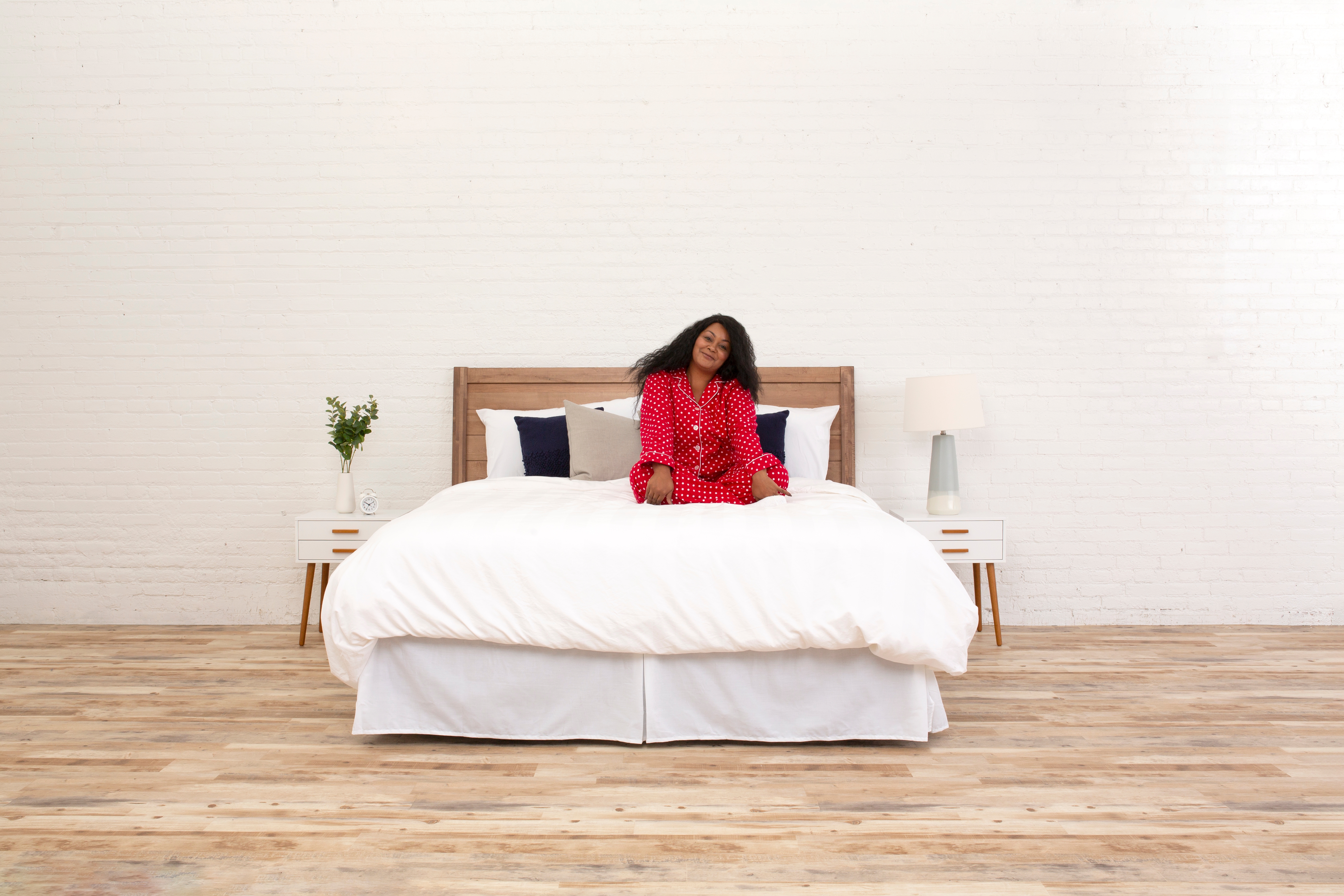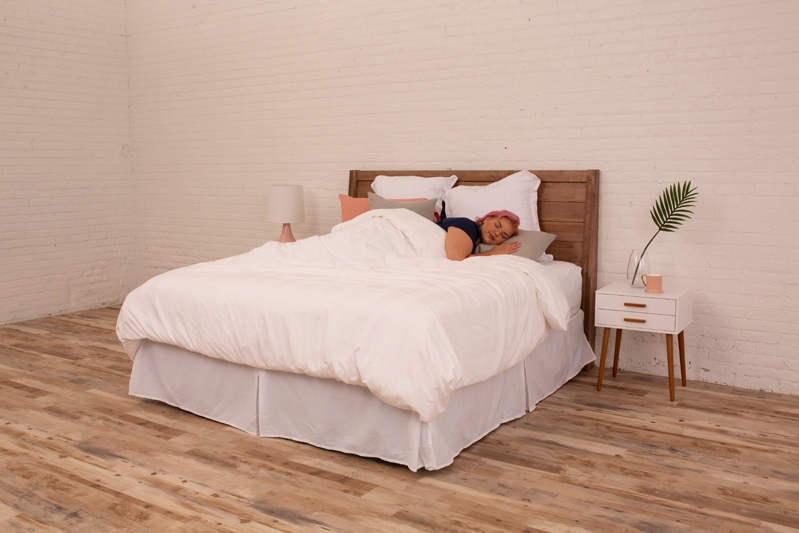A mattress typically lasts between seven to ten years, depending on various factors such as material, usage, and maintenance. If you're wondering how long your mattress will remain in top shape, consider this: Even the best mattresses, like your favorite cup of coffee in the morning, have a limited shelf life. Whether you're resting on a spring, latex, gel foam, hybrid, or even a waterbed mattress, understanding its average lifespan can help you plan for an upgrade.
Let’s explore the expected longevity of different mattress types, including the key indicators that will let you know that it might be time for a replacement. After all, the ultimate goal is to ensure you get the best night's sleep possible!
How Long Should a Mattress Last?
A mattress is a long-term investment in your sleep health, and its quality plays a significant role in providing long-term comfort. On average, a mattress should last seven to ten years, depending on the type of materials, usage, and care. High-quality mattresses made from durable materials can offer longer life, ensuring that you can enjoy optimal comfort and support for years to come.
While high-quality mattresses made from durable materials can offer longer life, wear and tear over time (think sagging or loss of support) are natural indicators that it’s time for a replacement. Understanding these timelines and indicators can help you maintain optimal comfort and support, ensuring your mattress continues to provide blissful sleep sessions for as long as possible.
What Type of Mattress Lasts the Longest?
According to the experts at the Sleep Foundation, there are four major types of beds: foam, innerspring, latex, and a hybrid (composed of all three materials). It’s imperative to pick a durable mattress that enhances sleep quality and protects against icky bed bugs and dust mites. The kind of material your mattress is made from can significantly impact how long you’ll be able to rest easy on it.
Foam Mattresses
A quality foam mattress is known for its durability, often lasting between eight to fifteen years with proper care. Its durability rating reflects the mattress's ability to withstand daily wear and tear, which is typically high for foam mattresses due to their dense composition.
- One of the key features is its resistance to sagging, meaning the mattress maintains its shape and support over time without significant sinking, even after prolonged use—this is definitely a bonus for plus-sized sleepers!
- Additionally, foam mattresses score well in resistance to premature softening, ensuring the comfort layers remain resilient and supportive instead of becoming too soft too soon.
- Another strong point is their resistance to developing body impressions. Foam tends to distribute your full-figured body weight evenly, preventing deep indentations that can compromise comfort and spinal alignment.
Innerspring Mattresses
Innerspring mattresses have an average lifespan of six to eight years. Their durability rating is moderate, mainly depending on the quality of the materials and the gauge of the coils used.
- Although supportive in their early years, innerspring mattresses often struggle with resistance to sagging regardless of sleeper size, as the coils may lose their tension over time, leading to noticeable depressions.
- Innersprings also tend to be less resistant to premature softening than foam mattresses because the comfort layers on top can compress, resulting in a loss of initial firmness. Unfortunately, these mattresses are prone to forming indentations where frequent pressure is applied, particularly if the coil system isn't reinforced.
- The overall longevity rating of innerspring mattresses is generally lower than that of foam mattresses, making them a more affordable, shorter-term solution. However, they may not be the best choice if you’re seeking longer-term comfort and support unless you invest in a higher-quality model.
Latex Mattresses
Latex mattresses are renowned for their exceptional durability. They often outlast other types and have an impressive ten to twelve-year lifespan.
- Along with boasting a high durability rating, one of their standout qualities is their resistance to sagging and developing body impressions, as the natural elasticity of latex allows the mattress to retain its shape and support even after prolonged pressure.
- These features contribute to latex mattresses' overall longevity rating, making them a reliable investment for those seeking long-term comfort and support.
- While the initial cost can be high, a latex mattress's durability and lasting performance often justify the price for many buyers looking for a mattress that endures well over a decade.
Hybrid Mattresses
Finally, the hybrid mattress. It’s a top choice for durability, typically lasting between eight and ten years. Hybrids combine the best features of innerspring and foam or latex layers, ensuring long-term support and comfort.
- These qualities contribute to their longevity rating, making hybrid mattresses a top contender for full-figured folks seeking long-lasting comfort.
- Their combination of durability, sag resistance, and consistent firmness, which helps prevent body aches and pains, makes them one of the leading choices in the mattress market today.
- For the best hybrid mattress on the planet, you need the Big Fig—the first mattress designed for bigger figures. While this mattress is undeniably supportive AF, that’s not even the best part. Due to the Big Fig’s superior quality, every mattress comes with a 20-year warranty.
Factors that Contribute to the Lifespan of a Mattress
The lifespan of a mattress depends on several key factors that determine how well it maintains its shape, comfort, and support over time. For example, quality of materials, frequency of use, and proper care or maintenance. Understanding these elements can help extend a mattress’s durability and ensure a better long-term sleep experience.
Mattress Quality
The quality of a mattress significantly impacts its lifespan; higher-quality materials and construction tend to resist sagging, wear, and deterioration over time, allowing the mattress to maintain support and comfort for longer. A well-constructed mattress, such as the Big Fig, lasts up to 20 years! Our high-quality materials are ideal for bigger figure sleepers, which sets us apart from the competition. No matter your sleep position, the Big Fig is designed to cradle and support your body without the dreaded mattress sag found in other mattresses.
Mattress Materials
The materials used in a mattress play a crucial role in maintaining its comfort and support over time. High-quality materials, such as dense memory foam, natural latex, or durable coils, are more resistant to wear and sagging, ensuring that the mattress maintains its shape and support over time.
The Big Fig mattress is crafted with superior materials to provide long-term durability and support for fuller-figured sleepers. We’re talking about high-density polyfoam, gel-infused latex for cooling and comfort, individually wrapped coils (the highest number in the industry) for targeted support and motion isolation, and stable edge support.
Mattress Foundation Type
The quality and type of mattress foundation play a crucial role in its lifespan by providing proper support and weight distribution, which prevents sagging and reduces wear. A sturdy, well-built foundation can prolong a mattress’s durability by helping it retain shape and support, especially with heavier or more structured mattress types.
Mattress Care
Just like routine maintenance for a car, your mattress needs regular upkeep to ensure maximum longevity. A mattress will last much longer if you flip it every six months (if it’s two-sided). Rotating your mattress can help to ensure that weight is distributed evenly over time to prevent body impressions. Keeping your mattress clean is also a good idea to avoid pesky bed bugs and dust mites, which can lessen the mattress's longevity. You can add a little extra layer of protection by adding a mattress protector to the mix, such as the one from your favorite mattress provider/BFF, Big Fig!
Mattress Weight Capacity
A mattress's weight capacity directly impacts its lifespan, as exceeding this limit can cause premature sagging, loss of support, and structural breakdown. Mattresses designed with a higher weight capacity, such as the Big Fig, often use denser materials and stronger support systems, which help maintain durability and performance over time, especially under heavier or combined weights.
The Big Fig mattress is designed to support up to 1,100 pounds and accommodate up to 550 pounds per side for couples. Its durable materials, reinforced coils, and high-density foams make this high-weight capacity possible, making it a reliable choice for heavier sleepers.
Sleep Position
Sleep position affects mattress lifespan because certain positions (like side-sleeping) place more pressure on specific areas, leading to uneven wear and potential sagging over time. In contrast, back or stomach sleepers tend to distribute their weight more evenly, which can reduce localized strain on the mattress and help it last longer.
Signs You Need a New Mattress
Recognizing the signs that you need a new mattress is essential for maintaining good sleep quality, comfort, and support for your full-figured body. According to the CDC, approximately 70 million Americans are suffering from chronic sleep issues—that’s a lot of people! A good night’s rest is crucial for everyone’s health and overall well-being. While many instances of poor rest might be due to a medical condition, your mattress could also be the culprit. Here are some of the tell-tale signs that the lifespan of a mattress has been reached and you need a replacement.
Your Allergies are Worsening
If you notice an uptick in symptoms, your mattress might be causing issues. It’s not necessarily allergy season, but the experts at the Asthma and Allergy Foundation of America teach us that dust mites can cause major problems for those with allergies.
Specifically, those with a troublesome dust mite allergy can have a really tough time sleeping, caused by coughing, wheezing, and shortness of breath. If not cleaned and cared for correctly, an older mattress can attract a build-up of allergy-aggravating dust mites—yikes!
There’s Major Mattress Sag
You should think about upgrading if your mattress sags and definitely if springs are poking out. Sagging appears as an imprint in the shape of your body and is a surefire sign that the mattress materials—like foam or springs—are breaking down and no longer provide the necessary support.
If you tend to wake up regularly with discomfort, especially pain in your back, hips, shoulders, or neck, your mattress is probably not supporting you properly anymore. Snoozing on a sagging mattress can cause poor spinal alignment, so if your bed feels “hammock-y,” it’s not supporting your core or your spin, and you should look for a replacement.
You Spot Mattress Mold
Mattress mold—yep, it’s a thing. In addition to harboring icky dust mites and bacteria, your mattress should be replaced if you see black spots, aka mold. Mold is unhealthy, and since it can’t be cleaned, you need a new mattress, period.
You’re Starting to Experience Night Sweats
If temperature regulation has never been an issue, but you’ve recently noticed you’re hotter when you snooze, it could be time to buy a new mattress. As the materials age, they can become softer and allow you to sink deeply into the mattress, restricting airflow and making you feel much warmer than usual.
Mattress Longevity FAQs
Can a Mattress Last 20 Years?
What’s the lifespan of a mattress? The general rule of thumb is between seven and ten years. However, if you invest in a Big Fig, your mattress will live 20 long glorious years (seriously, it even comes with a 20-year warranty to match!).
We use high-performance materials that work together seamlessly to keep you cool and comfy throughout the night. The plush, quilted top is treated with THERMOGEL COOLING ® technology that activates with body heat. You’ll benefit from a layer of gel-infused perforated foam just beneath for maximum airflow. Together, these layers actively cool the body for an undeniably comfortable sleeping experience. What’s not to love?
So, what type of mattress lasts the longest? Hit the snooze button, channel some serious snuggle vibes on a Big Fig, and enjoy two decades of great rest—because you deserve it!
What are the Risks of Sleeping on an Old Mattress?
Sleeping on an old mattress can lead to a range of issues, including back and joint pain due to inadequate support, disrupted sleep from sagging or uneven surfaces, and increased allergies from dust mites and allergens that accumulate over time. Additionally, older mattresses often lose their ability to regulate temperature and moisture, which can cause discomfort and impact overall sleep quality.








